- Administrator
- Albums and Singles
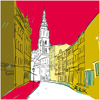 On his third album as Bionulor, Sebastian Banaszczyk has made an even greater leap into personalizing his sound. While he still focuses on the use of processed and recycled sounds, here there is a sense not only of consistency from piece to piece, resulting in a cohesive album of material, but also a more personal touch, a human element all too often missing from this sort of music
On his third album as Bionulor, Sebastian Banaszczyk has made an even greater leap into personalizing his sound. While he still focuses on the use of processed and recycled sounds, here there is a sense not only of consistency from piece to piece, resulting in a cohesive album of material, but also a more personal touch, a human element all too often missing from this sort of music
Erik is based entirely upon the composition "Gymnopédies" by Erik Satie,throughout the 15 pieces that make up this album, Banaszczyk keeps with a recurring motif of backward melody from the original composition. The results come across like a childhood memory that has never left.The cover sketch of his hometown seems to round out this piece of nostalgia.
Pieces like "ST.001" and "ST.008" add to the vintage feel of the album.The former's aged crackles obscuring melody and miniscule changes result in an overall intimate sound, while the latter's use of silence with processed melody comes together with a complexity that belies its overall basic structure.
"ST.007" leans more into conventional music sounds, with mangled tones providing the foundation for mostly untreated piano and a dissonant, unidentifiable accompaniment.Similarly, "ST.004"'s seemingly random outbursts of static and music come across like the dying pulses of a radio tower, covering a lot of ground in its rather short duration.
The longest piece, "ST.009", makes good use of its extended duration.Fragile melodies rise and fall before being mangled and pulled together, resulting in a more dissonant, but not overly raw piece.This becomes a cyclic process that keeps a high level of diversity throughout.The following piece also exemplifies this greater sense of complexity, bouncing extremely tiny sounds around a mix together resulting in a piece that feels a bit more collage-like in comparison, but not sloppy or inconsistent.
The only tracks that come across as less engaging are the ones that show little change or variation in their structure, such as the third and final pieces.However, given their short lengths it comes across more like an interlude or a brief experiment rather than an attempt at a fully realized track, so it does not detract from the album as a whole.
I compared the first Bionulor album to the earlier works of Aube, but on Erik, Sebastian Banaszczyk has developed a much stronger identity and personal sound.While the extreme processing and dissection of preexisting sounds can make for an interesting experience, it does not necessarily make for an enjoyable one, but on here it results in a pleasant, but also bold album that hits all the right notes for this kind of sound art.
samples:
 
Read More
- Administrator
- Albums and Singles
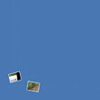 Performed, composed, and recorded over a period of 14 months, Crosshatches is a massive and exquisitely constructed 85 minute piece stretched across two compact discs. On it, Pisaro and Tsunoda sketch and blend non-musical sounds into musical ones, erasing the seemingly natural distinction between them as they go. The vehicle for that transformation is crosshatching, which the duo elegantly transforms into a musical mode.
Performed, composed, and recorded over a period of 14 months, Crosshatches is a massive and exquisitely constructed 85 minute piece stretched across two compact discs. On it, Pisaro and Tsunoda sketch and blend non-musical sounds into musical ones, erasing the seemingly natural distinction between them as they go. The vehicle for that transformation is crosshatching, which the duo elegantly transforms into a musical mode.
Hatching is a technique used in the visual arts that consists in placing roughly discrete parallel lines next to eachother at various distances. Cross-hatching is a similar technique. By varying the angle, closeness, thickness, and lengths of their lines, artists such as Albrecht Dürer used it to create the illusion of volume, texture, and contrast in his drawings, woodcuts, and engravings. I keep thinking about these qualities when listening to Michael Pisaro and Toshiya Tsunoda's Crosshatches on Erstwhile. Beside the pleasure of hearing the album, which is subtle, sometimes delicate, and quite beautiful, I've enjoyed thinking about the ways Pisaro and Tsunoda translate this visual technique into a musical one.
Crosshatches is made up primarily of sine tones and field recordings. The field recordings come both raw and in a manipulated state, whether they're chopped, looped, distorted, or otherwise. Guitars are used briefly in a few passages on the first disc, and a piano shows up near the end of the second. I assume that Michael plays both and that Toshiya provides the field recordings, but there are no credits to confirm that suspicion and no other information online. Static, interference, and possibly other sources are also used.
Initially, the music sounds one-dimensional. Michael and Toshiya's contributions bleed into one another, forming a hard, smooth surface. It's the musical equivalent of seeing a polished marble block or rolling a glass bead around in your hand. With time, variations and contrasts emerge. Instruments rise above the surface and draw shapes in the air, and tiny imperfections, little details previously unnoticed, come into focus. I hear people laughing in the distance, insects, and maybe the shuffling of equipment in a studio. The music branches out, diversifies, and confuses simultaneously. There's a beautiful crescendo on the first track of the first disc that culminates in little bursts of guitar and a heavily plucked bass. Buzzing tones continue underneath, but I can no longer distinguish which of them are recorded and which are performed, and I can't even be sure that the guitars themselves aren't a kind of modified field recording—maybe just the sound of someone warming up.
One of my favorite sections is on the second track of the second disc. It is, as far as I can tell, a mostly untouched recording of a storm. The recording captures the sound of rain, wind, and the whipping of tree limbs; I can close my eyes and half imagine the bushes outside my window bending and dancing in the downpour. Only after listening to the album a couple of times did I notice the sine waves shimmering at the edges of the storm. They were there when the recording started, but I thought they had disappeared. Were they invisibly present the whole time? Or deftly re-inserted into the mix? It isn't easy to tell and since the wind and waves pair so well I can't be sure what would happen if any of the elements of the recording were taken away. I also can't be sure there aren't more invisible elements swimming quietly in the background.
There's a corresponding section in "1.1" where Toshiya and Pisaro combine apparently random static with more obvious field recordings. Listening to the static closely, it sounds like a heavily modified version of the storm recording; the rhythmic character of the water is at least intact. There's some fun in trying to guess which sounds come from which sources and I enjoy the way the music draws connections between cricket sounds and the crack of water on the ground, or between plucked guitar strings and the sound of far off voices. But that says only a little about why the album is beautiful. The way the sounds are combined and folded into each other is pleasing in its own right, as are the moments of near silence and melody that dot the album under different guises.
As with any piece that uses crosshatching, the music on Crosshatches is spun out of elements that are invisible from a distance but discernible with attention. I think of Albrecht Dürer's engravings and notice that his lines rarely call attention to themselves. I notice the subjects in his work first: the people and the shading, the scene and the illusion of depth. Only later do the lines come to the fore and only if I choose to look. Nearly the same thing happens on Crosshatches, except Pisaro and Tsunoda also work with duration, so elements of their work pop in and out of focus over time. Translating a visual technique into an musical one forgoes the unveiling of a completed work. Unlike Dürer, Michael and Toshiya don't build up familiar images with their lines. What we get instead are illusory scenes that converge and fall apart; the coming and going of sounds produced, recorded, rent apart, and blended together again.
samples:
 
Read More
- Administrator
- Albums and Singles
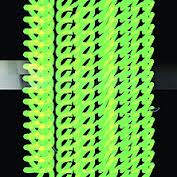 The use of Daphni as a distinction between the bulk of Dan Snaith's work done as Caribou is more than just an attractive new coat of paint or the result of yet another frivolous lawsuit. As Daphni, Snaith takes the elements of electronic music and dance that inspired much of 2010's Swim and extracts all semblance of outside influence, leaving a pretty faithful, smirkless take on house music. To me, Daphni is a way for Snaith to immerse himself into a subculture he's only been a tourist to. Here he can be a face in a crowd, playing freely with ideas instead of living up to a reputation.
The use of Daphni as a distinction between the bulk of Dan Snaith's work done as Caribou is more than just an attractive new coat of paint or the result of yet another frivolous lawsuit. As Daphni, Snaith takes the elements of electronic music and dance that inspired much of 2010's Swim and extracts all semblance of outside influence, leaving a pretty faithful, smirkless take on house music. To me, Daphni is a way for Snaith to immerse himself into a subculture he's only been a tourist to. Here he can be a face in a crowd, playing freely with ideas instead of living up to a reputation.
The best moments are the small wonders. The subtle drum fills between the choruses in Dan's take on afrobeat group Cos-Ber-Zam's minor hit "Ne Noya," for example, outweigh most of the song's other parts. The incessant escalating melody that colors the break is a means to an end, a tiny little punctuation which makes the stuff before it worthwhile. This is what I usually like best about Dan Snaith's work as of late. He understands how to have a conversation between instruments that seems natural even when they're becoming more predominantly sequencers and samplers than live drums and guitars. When put into the role of a strictly electronic producer, you have to do something besides layer sounds dispassionately. He knows, as a drummer, that timbre and dynamics have to change to keep a song interesting.
Having said that, however, there is a fair amount of fluff in a record like Jiaolong, as there is bound to be while Snaith learns to understand the nuances of the genre he's tackling. While not a totally new conception—Dan has been playing in night clubs under the name since last year—it does bear some level of amateur naivety to how he assembles his songs. I said that the majority of these songs are a means to an end, and I mean it; depending on the song, the core melodies here can be subtly pretty or mostly ignored. When those small wonders decrease in quantity, it is easy to feel like some of the songs are overlong."Pairs" is especially guilty, where it takes over half the song for develop any kind of rhythmic variation. Once it does, I found myself clinging on, mesmerized by the scarce hand drums and singular claps. "Ahora" works similarly, introducing some distant drones over polyrhythms in a rudimentary way but evolving just enough as to avoid being pigeonholed as background noise. "Springs" is more active with its abusive synth bursts and frantic loops, which I imagine makes for an impressive live performance.
Those minor bits of inspiration are what I treasure in electronic music, and I think Dan Snaith realizes that his knack for finding them sets him apart. I like listening to Jiaolong because it's like solving puzzles: there's little quirks and bumps that make it all work, and I have to listen over and over to catch how those pieces fit. I just wish there were more pieces here.
samples:
Read More
- Administrator
- Albums and Singles
 Ben Chatwin's latest effort is an experiment gone awry in the best possible sense, as his initial plan to make an album in a single week ultimately turned into his spending more than a year trying to abstractly replicate the creation of the world using The Seven Days of Creation as a guideline.  Unsurprisingly, the resultant album is considerably brighter than its brilliant predecessor (Day One being the creation of light, after all) as well as more structurally complex and dynamically varied, but Ben's compositional talents thankfully seem to have had no trouble matching his daunting ambition.
Ben Chatwin's latest effort is an experiment gone awry in the best possible sense, as his initial plan to make an album in a single week ultimately turned into his spending more than a year trying to abstractly replicate the creation of the world using The Seven Days of Creation as a guideline.  Unsurprisingly, the resultant album is considerably brighter than its brilliant predecessor (Day One being the creation of light, after all) as well as more structurally complex and dynamically varied, but Ben's compositional talents thankfully seem to have had no trouble matching his daunting ambition.
With this album, it no longer seems right to describe Ben Chatwin as a guitarist anymore, as he has most definitely made the leap to "composer."  And It Was So is certainly still guitar-based, but Ben also prominently plays organ, synthesizer, and bells and enlists a number of other musicians to contribute strings and percussion.  Also, Chatwin's most impressive achievements here are overcoming the production and compositional challenges inherent in such a massive and difficult undertaking.  After all, the Genesis creation narrative is all about nothingness and entropy gradually taking shape.  Evoking nothingness in a compelling way is not easy.
For the most part, Chatwin wisely chooses to depict that unformed chaos with murky, moody synths and darkly gnarled guitars, which reprises a lot of what he did so wonderfully on Descent Into Delta.  He does it wonderfully again here, but I was most impressed with how varied and multifaceted some of the drone sections are this time around.  The opening "Let There Be Light," for example, creates its droning bed from a number of divergent textures: brooding and throbbing synths, twinkling guitar shimmer, distantly chattering voices, and harsh distorted strums.  Also, the whole complexion of Ben's drones changes dramatically from song to song.  For example, "The Two Great Lights" is built upon a restrained, melancholy organ motif, while the following "Swarms of Living Souls" has a much harsher bed of buzzing and grinding guitars.  Despite their similar bases, none of these seven pieces have the same atmosphere at all.
Of course, what makes Talvihorros so great is that Chatwin is not content to merely make an excellent drone album: the real magic occurs when form emerges from the chaos.  Interestingly, it is generally not the emerging motifs themselves that make And It Was So so mesmerizing, as most of them are too understated to make a strong impact as melodies (this is by design).  Rather, the beauty lies in how the new motifs wrestle and contrast with the underlying thrum or in how the songs' original musical thread seamlessly falls away altogether.  This feat is executed most dazzlingly in "Let There Be Light," as Ben uses Hecker-esque crackles and stutters to make it seem like the titular light is actually tearing through the previously existing music.  That success is not a wild fluke though, as many of the other songs develop in equally inventive ways, such as the slowly emerging and abruptly warping synth pattern that builds within "The Two Great Lights."
Chatwin has made a near-perfect and wholly unique album, all the more impressive given its bold scope.  No one else could have made this.  My sole critique is more of a personal preference rather than a shortcoming: sometimes the rare appearances of drums or an actual riff remind me that there are actual people in a room somewhere playing this music, which  causes the dreamlike spell to flicker a bit for me.  That is an extremely minor quibble in the face of such a massive accomplishment though.  And It Was So is truly a compositional tour de force, seamlessly weaving seven individually impressive narratives into one wonderfully absorbing and listenable arc.  Whether it is actually a better album than Descent Into Delta is hard to say, but this is unquestionably Chatwin's artistic zenith to date.
 
Read More
- Administrator
- Albums and Singles
 The trajectory of Natural Snow Buildings continues to amaze me with each new album, as Mehdi and Solange seem to grow more and more inventive and skilled at composition every single time they surface.  Mehdi's last solo effort, the drone-heavy Then Fell the Ashes... was one of favorite albums of 2011, but Bogyrealm Vessels is a completely different (but no less wonderful) animal: an enigmatic and weirdly beautiful song-based concept album involving a space invasion, schoolgirls, and giant plants.
The trajectory of Natural Snow Buildings continues to amaze me with each new album, as Mehdi and Solange seem to grow more and more inventive and skilled at composition every single time they surface.  Mehdi's last solo effort, the drone-heavy Then Fell the Ashes... was one of favorite albums of 2011, but Bogyrealm Vessels is a completely different (but no less wonderful) animal: an enigmatic and weirdly beautiful song-based concept album involving a space invasion, schoolgirls, and giant plants.
One of the more endearing aspects of Natural Snow Buildings is immediately evident here: while this is musically a Mehdi Ameziane solo album, Solange Gularte's cover art is absolutely crucial.  In fact, what little I can piece together about the album's concept is taken almost entirely from the accompanying art (though the evocative song titles help a bit too).  I wholeheartedly appreciate how cryptic Bogyrealm Vessels narrative is left, as it is an intriguing challenge to try to figure what it all means.  Also, I generally hate rock operas and concept albums, so I would probably have flung Bogyrealm across the room if Mehdi had done something as uncharacteristically ham-fisted as spelling everything out with clumsily expository lyrics.  I am a huge fan of vague, unexplained menace though, so this approach works just fine for me.
Curiously, most of that sense of menace stems from the album's apparent narrative, as the actual music is much less heavy and dark than I historically expect from Twinsistermoon.  Also, when Mehdi sings, the lyrics that I can make out would not seem disturbing at all if decontextualized from the art and song titles.  That lighter touch works beautifully here, as Bogyrealm Vessels has the gently hallucinatory feel of a deeply strange, warm, and beautiful dream that seems fragile enough to dissipate at any moment.  That perfect surreal reverie is threatened slightly by the brief, but relatively straightforward, acoustic balladry of "Bogyrealm" and a few other moments, but Mehdi is otherwise infallible in keeping me fully immersed in his alternately uneasy and blissful alternate world.
Roughly half of the album is still devoted to drone pieces, but they are uncharacteristically short and shimmering, acting mostly as pleasant interludes between the folkier "songs."  The sole significant exception is the grindingly heavy "Interferences From Extincts," which favorably recalls some of Mehdi's more crushing work from the past.  All of the drone pieces on Bogyrealm Vessels are quite good despite their brevity.  That came as no surprise to me, as Mehdi has long ago proven himself to be a master of the form.  However, I was caught off-guard by how much I loved some of the vocal pieces.  While Mehdi's singing does not depart much from the eerie child-like dirges of past efforts, his lazily cascading and off-kilter guitar playing on pieces like "In Deep Waters" and "Prisms" is absolutely ideal for the album's dreamy, not-quite-there fantasia.
This is a very unusual effort within the Twinsistermoon oeuvre due to its lightness and relative insubstantiality, but I see both of those traits as definite assets.  This is a great album, all the more so because Mehdi avoids both repeating his previous successes or plunging too deeply into the sadness that pervades some of his earlier work.  As aforementioned, a few of the songs here do not quite sustain Bogyrealm Vessel's lysergic trance as well as they could have, but they are easily eclipsed and forgotten by the album's end.  It is funny to think that an album this deeply weird can be considered "accessible," but it feels like it is...comparatively, anyway.  While I personally prefer some of Mehdi's heavier, long-form drone pieces to any of the individual pieces here, this is a strong candidate for Twinsistermoon's finest complete work.  At the very least, it is the most endlessly listenable.
 
Read More
- Administrator
- Albums and Singles
 I have fallen in love with Bob Mould again. I had the amazing opportunity of seeing Hüsker Dü as a teenager on their final tour and Mould's first two solo albums have a lot of outstanding songs, but for me it wasn't until Copper Blue that I became more in touch with his music. Twenty years ago, Mould was able to thread a collection of great songs into something much more magnificent. With Silver Age, he has finally, for me at least, been able to do this again.
I have fallen in love with Bob Mould again. I had the amazing opportunity of seeing Hüsker Dü as a teenager on their final tour and Mould's first two solo albums have a lot of outstanding songs, but for me it wasn't until Copper Blue that I became more in touch with his music. Twenty years ago, Mould was able to thread a collection of great songs into something much more magnificent. With Silver Age, he has finally, for me at least, been able to do this again.
I have always admired Bob Mould as an incredible songwriter and player, singing straight from his bleeding heart, pulling no punches. Each album since the demise of Sugar—yes, this is 18 years in a row—seems like an experimental new direction. Bob got tired of the "rock" thing and made the eponymous hubcap album, got tired of the "rock" thing again and vowed to stop playing loud after The Last Dog and Pony Show. After discovering techno and loading albums with too much material, he found a vocoder, making his last release, Life and Times, almost completely unlistenable.
With the 20th anniversary of Copper Blue, perhaps he has rediscovered how much a simple and direct rock record with a lot of guts, hooks and melodies, threaded together with appropriate transitions works masterfully. He did do it before, so it's not as if he can be accused of ripping himself off. Silver Age is once again an extremely personal statement, as almost all of his songs are presented with the angst of a vicious rocker in the prime of his life, even though, at 18, Bob enters his own silver age.
It is impossible to avoid comparison to Copper Blue, as it follows the exact same trajectory: open with a slow, but driving introduction—"Star Machine" provides an "Act We Act" type intro—before launching into a sequence of three prime-time-ready hit single types, reaching cilmax in the middle—"The Descent," a "Changes"-caliber gem—and coming down to close side one on a slow, but majestic loud masterpiece. "Stream of Hercules" probably won't find as many worshippers as "Hoover Dam," but it sure is a fine contender.
Side B once again isn't as much of a hit factory. For me, the second half gets progressively better, with the last two songs leaving the largest impressions. It's no surprise that a song bearing the title of "Keep Believing" is probably the song most reminiscent of Hüsker Dü that Mould has possibly ever made in his career since. Closer "First Time Joy" has a cadence like a memorable final sequence in a tense but enjoyable film and over the few months of listening to this album, it has been strong enough to make me start again from the beginning numerous times.
Silver Age has not worn thin on me in the last since I first got it, and it has most definitely earned my admiration as one of my top albums of the year. What I do miss is having the physical album, looking at the lyric sheet, but that's probably more of a time issue than an actual physical product issue. (The most time I spend with these days is spent commuting, rather than attentive at home or out in the live scene.) I would like to feel as intimate with the album as I have been with many of Mould's other records. With that in mind, it's almost a disservice writing this review before I have truly soaked it in as much as I want to. This will take some more time, however, but it will at least be an enjoyable time.
Read More
- Administrator
- Albums and Singles
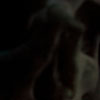
While some of Collins' works have leaned a lot into more guitar-centric sounds and traditional structures, on Tenebroso he goes for a more understated, cinematic approach. Bleak and dark, but without any trite cliché elements, the resulting disc is a wonderfully unsettling one.
Collins works heavily with silence and quiet bits throughout this album.After its initially noisy opening, "Scythe" drifts slowly into sparse piano, initially fragmented notes that slowly become more elongated and sustained into longer passages, conjuring a creeping tension until its conclusion.
"In Valleys" also leads off with practically silence, eventually coming together in a clattering mass of what sounds like far off strings and wind chimes that stays pretty open and arid throughout."What You Are Now We Used To Be" also begins in mostly quiet, like howling winds in the distance, but eventually builds to a swarm of insects, the audio equivalent of pestilence ravaging the land.
"What We Are Now You Will Be" allows for some minor bits of melodicism to come forth, cavernous resonations echoing beneath massive, sprawling tones.The closing "Devil" encompasses it all, initially a minimal, distant hum that ends up aired with an organ ringing away somewhere deep beneath the earth.It does not take long before the silence is removed, ending the disc on an especially shrill, harsh noise outburst that sounds distinctly evil.
It is almost a shame that the whole Mayan apocalypse thing did not happen, because Tenebroso would have made the perfect soundtrack for it."Tapeta Lucida" perfectly encapsulates destruction, from the rush of winds to burning fires to creaking noises like the Earth breaking apart.As far as conveying darkness, William Fowler Collins has created a work that rivals Lustmord's Heresy as a piece of captivating, but sinister audio.
samples:
 
Read More
- Administrator
- Albums and Singles
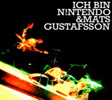 While the recent Gustafsson album Bengt saw the prolific saxophonist working with extreme restraint, here with the Norwegian trio Ich Bin N!ntendo he is doing anything but. A short, but fierce live performance captured and mastered by Lasse Marhaug, it lurks somewhere between free jazz, punk, and noise and makes for a unique, if slightly painful experience.
While the recent Gustafsson album Bengt saw the prolific saxophonist working with extreme restraint, here with the Norwegian trio Ich Bin N!ntendo he is doing anything but. A short, but fierce live performance captured and mastered by Lasse Marhaug, it lurks somewhere between free jazz, punk, and noise and makes for a unique, if slightly painful experience.
Broken into three tracks totaling about a half hour, the fidelity of the recording is rough at best, but the rawness adds to the overall feel to the album."Start First" launches right in, its shrill brittle guitar distortion cuts like a dull serrated knife.Between that, the clapping drums, and piercing horns, intense barely begins to describe it.With the acidic sax and overdriven bass, it vacillates between chaos and order, occasionally locking nicely into taut grooves that resemble a messier version of John Zorn's Painkiller.
"End" oddly sits in the middle, and at only three minutes it jumps right in as an explosion of sound, wasting no time getting down to business.It briefly settles into an understated groove, but that hardly lasts long. "Second" actually makes up more than half of the disc, and demonstrates a bit more organization to the performance.Opening up with extended guitar riffs, the drums, bass, and sax eventually come into more of a shamble rather than a blast.The quartet actually slows down a bit here and there though, opening up the mix a bit to allow more subtle, echoing guitar passages, but still retaining that scorched earth, burnt out quality to it.Subtlety is of course relative here, and even at that it does not stay calm for long, quickly going back into the full on noise skronk to finish out the performance with the same intensity it started with.
Overall the collaboration may sound like a free jazz album, but the combination of the performance and the appropriately nasty recording quality give it much more of a fitting, snotty edge, which comes together quite well.Given the juxtaposition of Gustafsson's earlier work this year, it definitely shows his range of playing, and the Ich Bin N!ntendo members, who I am otherwise not familiar with, manage to hold their own nicely in this brilliantly unhinged work.
samples:
 
Read More
- Administrator
- Albums and Singles
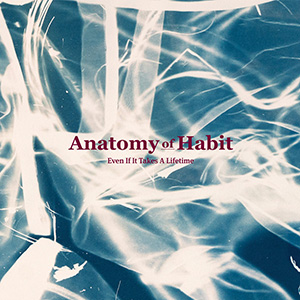 It certainly does not seem as if it has been seven years since Ciphers + Axioms, but it has, and Even if it Takes a Lifetime is the first music Anatomy of Habit have released since then. The heaviness that pervaded their previous two albums and debut EP is here for sure, but there is also a greater sense of melodicism, spearheaded by band leader Mark Solotroff’s (Bloodyminded, The Fortieth Day) vocal approach. The album still sounds like the same band, but one that has solidified into a pummeling, yet nuanced machine that is as complex as it is heavy, resulting in their best work to date.
It certainly does not seem as if it has been seven years since Ciphers + Axioms, but it has, and Even if it Takes a Lifetime is the first music Anatomy of Habit have released since then. The heaviness that pervaded their previous two albums and debut EP is here for sure, but there is also a greater sense of melodicism, spearheaded by band leader Mark Solotroff’s (Bloodyminded, The Fortieth Day) vocal approach. The album still sounds like the same band, but one that has solidified into a pummeling, yet nuanced machine that is as complex as it is heavy, resulting in their best work to date.
The album opens with "A Marginal World" and, at less than seven minutes, is the shortest song the band has created so far. With the limited duration the band wastes no time launching in to a heavy chug by rhythm section Skyler Rowe and Sam Wagster, nicely complemented by Solotroff's bandmate in Bloodyminded Isidro Reyes' metal clattering accents. Solotroff's booming voice comes right in quickly, his stentorious delivery as severe as ever. Rapid fire snare and cymbals soon come in, upping the tempo and giving a slightly less doom laden feel compared to their other work. There are a lot of transitions given its short length, but it leads to a complex, yet immediate sound from the start.
"Your Pure Breath" blends right in from "A Marginal World," leading from a droning tone into sparse guitar.Bass and dramatic vocals eventually come in, and then the heavy, pounding drums and squalling guitar.It is certainly heavy, but not overly oppressive, and the slow depressive flow highlights the squalling guitar and subtle metallic percussion.The structure towards the end is especially notable, hinting at some of the band’s less overt post-punk influences via Alex Latus' guitar work.
Album closer "Now We Finally Know Ourselves" clocks in at 19 minutes and thus feels most in line with previous works from the band.It beautifully shifts from subtle echoing guitar, pulsating electronics, and understated metal work before locking into that insistent throb the band does so well.There are multiple phases of heavy pound versus open reflective passages, keeping the dynamic fresh and varied.There is even a bit of lush organ thrown into the mix.For all its dour heaviness, there seems to be an almost positive, uplifting end with Solotroff singing the title of the song, sounding almost like a new beginning.Compared to previous works (and his other projects), Solotroff's lyrics seem more personal this time around, with an emphasis on love, loss, and relationships with others.
Solotroff's commanding, declarative voice is certainly present, but he has obviously has added a bit more melodicism that complements the music perfectly.It is still undeniably him (and Anatomy of Habit), but it is an added depth that makes Even if it Takes a Lifetime unique, congealing into something more song-like and musical compared to the relentless heaviness that defined their previous works.There is a second album pending that was recorded at the same time, and I am certainly curious how it compares, but even just more of this would be fine by me.
Samples can be found here.
Read More
- Administrator
- Albums and Singles
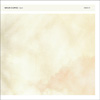 Winter is the most fitting season for Deupree's music, a distinctive blend of cold, sparse spaces mixed with warm, melodic passages. Faint is no different, an album consisting of five long pieces that capture the stillness of nature, the coldness of electronics, and the warmth of organic instrumentation.
Winter is the most fitting season for Deupree's music, a distinctive blend of cold, sparse spaces mixed with warm, melodic passages. Faint is no different, an album consisting of five long pieces that capture the stillness of nature, the coldness of electronics, and the warmth of organic instrumentation.
The two opening pieces, "Negative Snow" and "Dreams of Stairs," put an extra emphasis on the sometimes hidden but always gorgeous melodic elements of Deupree's sound."Negative Snow" initially hides amongst what sounds like a slowly rushing river and small, delicate noise fragments that twitter about.Eventually an organic, almost breathing melody comes out of the abstraction, adding a human warmth to an otherwise cold piece.
Taylor employs some unidentifiable clattering object as a textural element on "Dreams of Stairs," is mixed with insinuated guitar and fragile xylophone like tones.There is a sense of spaciousness that pervades, even as it builds up to a slightly more forceful conclusion, but for the most part it comes across like a warm, misty morning.
"Thaw" and "Sundown" instead choose to showcase the textures rather than the melodies.The former is a slowly expanding wall of sound that is more static and drifting than the sounds Deupree usually works with, resulting in a meditative, frozen piece of music."Sundown" opens with a droning, organ like passage that again channels a vast expanse, aided by quiet, crackling textures that stay very minimal throughout.Infinitely stretching tones rise and fall at differing intervals, but help close the otherwise sparse piece in a dramatic swell of sound.
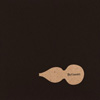
Between is a single track performance recorded on a recent tour of Japan, with Deupree alongside Simon Scott, Corey Fuller, Marcus Fischer, and Tomoyoshi Date, all artists that compliment one another, but each take their own direction in terms of sound.Working with a combination of electric and stringed instruments, the amount of caution and restraint used by each performer is admirable:sounds are kept hushed and quiet, each conveying a sense of intimacy as if being in the room as the recordings were taking place.
Droning tones meld with minimal percussive pings, sounding neither like a traditional instrument nor a random sound, but somewhere in between.At times a ghostly melody, at other times a found object scrape become the focus, with attention slowly drifting between the two.The latter half brings in a bit more electronic instrumentation, mixed with the delicate, natural textures of before.The little clicks and pops that spring up are reminiscent of elements of the so-called Lowercase sound, but here they compliment a soft melodic drift rather than a cold passage of electronic music.
samples:
 
Read More
- Administrator
- Albums and Singles
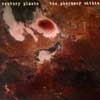 Embracing the world of niche analog formats, Albany, New York’s Century Plants—the duo of guitarists Eric Hardiman and Ray Hare—have just put out this lathe cut 7" and one sided LP of new material that differ drastically from one another in style and sound, but have the same undeniable level of depth and quality that I have come to expect both from this project and from the requisite multitude of side-projects they are involved in.
Embracing the world of niche analog formats, Albany, New York’s Century Plants—the duo of guitarists Eric Hardiman and Ray Hare—have just put out this lathe cut 7" and one sided LP of new material that differ drastically from one another in style and sound, but have the same undeniable level of depth and quality that I have come to expect both from this project and from the requisite multitude of side-projects they are involved in.
On the 7" single, "Illuminate the Light" is the more stripped down of the two, with Hardiman and Hare playing mostly undistorted, intertwined echoing guitar passages, making for a somewhat subdued sound. It gets offset, however, by slightly menacing swells of feedback that keep things at a pleasant state of unease."Blackout the Night" goes for a bit more of a psychedelic feel, throwing in some reversed guitar tones and a more complex, almost jazz influenced guitar duality.Unfortunately, being a lathe cut slab of vinyl the fidelity is a bit lacking, but the included CDR of the same material makes that a non-issue.
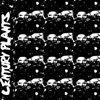
The one-sided self titled LP is a different beast entirely.Somewhere between a cover and tribute to Discharge's "State Violence State Control," it retains the duo's psychedelic leanings, but with extremely different results.Recorded live last year with Phil Donnelly on drums, it makes for a spikier, slightly nastier performance.Moving along at a moderate, but solid pace, it captures the best moments of space rock with a snarling, punk edge.There really is no delicate guitar playing or understated melodies to be heard here, just big fuzzed out riffs, Hare's aggressive vocals, and Donnelly’s steady, yet complex rhythms.
I never have any idea what a Century Plants release from will sound like, but I love this. Other than the unifying psych rock elements, the sound can be completely different from one track to the next, exemplified by this pair of simultaneous releases which sound like drastically different projects.
samples:
 
Read More


